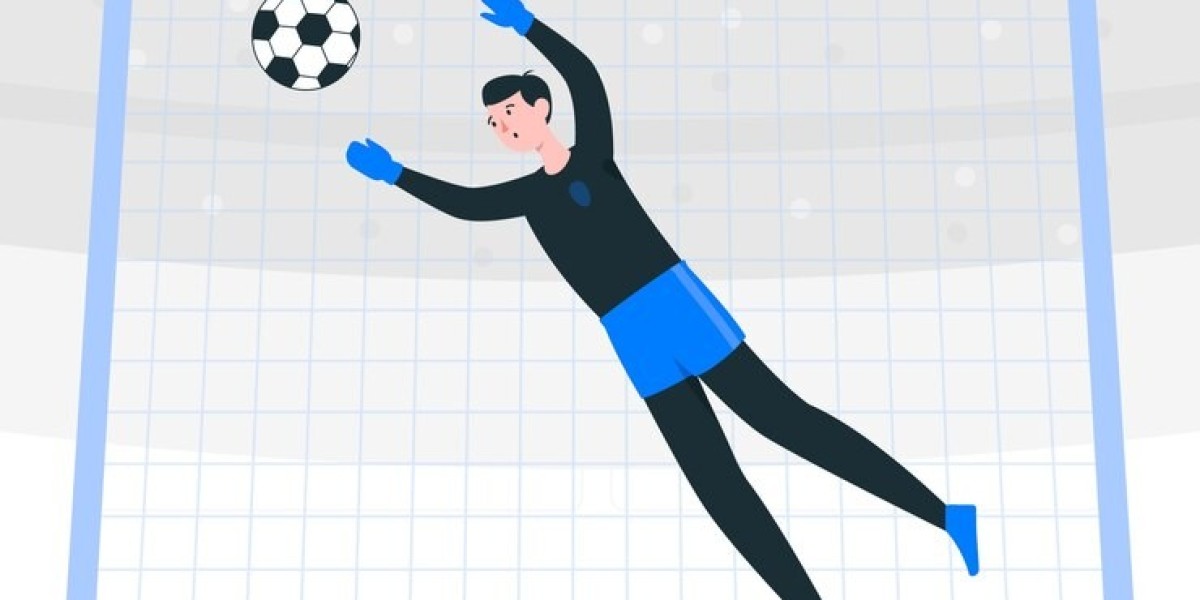Goalkeeping in soccer is a highly specialized position that demands a unique blend of physical prowess, mental fortitude, and technical skill. A goalkeeper is the last line of defense, the guardian of the goal, and often the difference between victory and defeat. Mastering this position requires more than just the ability to block shots; it involves a comprehensive understanding of movement, positioning, and anticipation. This blog post will explore seven essential movement skills every goalkeeper should develop, along with practical training tips to help you or your aspiring young athletes excel.
1. Goalkeeper's Sprint
Description: The ability to move quickly over short distances is crucial for a goalkeeper. Whether it's closing down an attacker, reacting to a through ball, or adjusting position, quick bursts of speed can make all the difference. Studies show that forward running is the most frequent displacement for goalkeepers, typically in the range of 0-5 meters.
Training Tips:
- Acceleration Drills: Focus on short-distance acceleration-based speed training, such as 5-meter sprints. These drills improve a goalkeeper's ability to quickly reach top speed.
- Linear Sprints: Incorporate longer distance sprints (over 10 meters) to build overall speed and stamina.
- Agility Ladders: Use agility ladders to improve footwork and coordination, which are essential for quick starts and changes of direction. This will complement the football players training.
2. Side-to-Side Positioning
Description: Lateral movement is just as important as forward speed for a goalkeeper. The ability to quickly adjust position from side to side allows a goalkeeper to cover more of the goal and react to shots from different angles. Common lateral movements include the lateral shuffle and the cut.
Training Tips:
- Lateral Shuffles: Practice shuffling laterally across the goal, maintaining a low center of gravity and keeping the eyes on the ball.
- Cutting Drills: Focus on using the outer leg to create force and quickly change direction.
- Unilateral Training: Incorporate unilateral exercises (training one side of the body at a time) to improve single-leg strength, acceleration, and change of direction speed.
3. Diving
Description: Diving is perhaps the most iconic goalkeeping skill. A well-executed dive can stop a shot destined for the corner of the goal. Proper diving technique involves a combination of agility, strength, and coordination.
Training Tips:
- Gradual Progression: Start with low dives, focusing on technique and body control. Gradually increase the height and distance of the dives as confidence and skill improve.
- Landing Technique: Emphasize the importance of landing correctly to avoid injury. Goalkeepers should aim to land on their side, using their arm to cushion the impact.
- Reactive Diving: Use reactive diving drills, where a coach or partner throws balls unexpectedly, forcing the goalkeeper to react quickly and dive. For the youth soccer training, make sure to adjust the throwing speed.
4. High Balls
Description: Dealing with high balls, whether crosses, corners, or long-range shots, requires excellent timing, judgment, and jumping ability. A football goalkeeper training near me must be able to confidently come off their line and claim the ball in the air.
Training Tips:
- Timing Practice: Use drills that simulate game situations, such as crosses and corners, to practice timing jumps and catches.
- Jumping Technique: Develop an efficient jumping technique to gain height and distance when jumping to catch the ball.
- Communication: Practice communicating with defenders to avoid collisions and ensure that everyone knows who is going for the ball.
5. Duelling
Description: Duelling refers to the close-range confrontations between a goalkeeper and an attacker, often in one-on-one situations. In these scenarios, a goalkeeper must be brave, decisive, and quick-thinking.
Training Tips:
- Angle Play: Practice closing down the angle to the attacker, making it more difficult for them to score.
- Quick Reactions: Use drills that focus on quick reactions and decision-making, such as reacting to deflections or close-range shots.
- Brave Positioning: Encourage goalkeepers to be brave and assertive in these situations, coming out to challenge the attacker and win the ball.
6. Distribution
Description: In modern soccer, distribution is an increasingly important skill for goalkeepers. The ability to accurately distribute the ball, whether by throwing or kicking, can help launch counter-attacks and control the tempo of the game.
Training Tips:
- Throwing Technique: Practice throwing the ball accurately to different targets, focusing on technique and arm strength.
- Kicking Technique: Develop a variety of kicking techniques, including punts, drop kicks, and ground passes, to suit different situations.
- Decision-Making: Train goalkeepers to make quick and smart decisions about when to throw, kick, or hold the ball, depending on the game situation. A good soccer program for toddlers can start with these basic skills.
7. Anticipation and Game-Reading
Description: Anticipation and game-reading are mental skills that can significantly enhance a goalkeeper's performance. By reading the game, anticipating opponents' moves, and understanding tactical situations, a goalkeeper can make better decisions and react more effectively.
Training Tips:
- Video Analysis: Watch game footage to study opponents' tendencies and patterns of play.
- Tactical Awareness: Educate goalkeepers about different tactical formations and strategies, and how to react to them.
- Communication: Encourage goalkeepers to communicate with their defenders, organizing the defense and anticipating potential threats.
How to Train a Goalkeeper Soccer
To effectively train a goalkeeper in soccer, focus on a holistic approach that combines technical skills, physical conditioning, and mental preparation. Start with the fundamentals, such as proper handling techniques, diving, and footwork. Gradually introduce more complex drills that simulate game situations, emphasizing quick decision-making and adaptability. Physical training should include agility, strength, and endurance exercises tailored to the demands of the position. Finally, mental preparation should focus on building confidence, resilience, and the ability to read the game effectively, ensuring the goalkeeper is well-rounded and ready for the challenges of competitive play. Best soccer academy near me in Mississauga will focus on these aspects.
Additional Training Tips
- Warm-Up Properly: Always start with a thorough warm-up to prepare the body for training and reduce the risk of injury.
- Cool Down and Stretch: After training, cool down with light cardio and stretching to promote recovery and flexibility.
- Use Proper Equipment: Ensure that goalkeepers have access to proper equipment, including gloves, appropriate footwear, and protective gear.
- Get Feedback: Seek feedback from coaches, teammates, and even opponents to identify areas for improvement.
- Stay Hydrated: Drink plenty of water before, during, and after training to stay hydrated and maintain performance.
- Rest and Recover: Allow adequate time for rest and recovery to prevent burnout and injury.
- Nutrition: Emphasize the importance of a balanced diet to fuel performance and promote recovery.
- Mental Preparation: Work on mental skills such as visualization, focus, and positive self-talk to enhance performance under pressure.
- Set Goals: Set realistic and achievable goals to stay motivated and track progress.
- Have Fun: Remember to enjoy the process of learning and improving. Goalkeeping can be challenging, but it can also be incredibly rewarding.
Key Skills
Here are some of the key skills that goalkeepers must possess:
- Agility and reflexes
- Strength and resistance
- Ball jump and handling technique
- Air game
- Communication and leadership
Technique 1: The W Technique
This classic technique is essential for catching shots that are chest-to-head height. Spread your fingers wide and create a 'W' shape with your thumbs and index fingers. This formation not only provides a broad surface area to catch the ball, but it also positions your hands to cushion the impact securely. Practicing the W technique with repetitive drills can significantly improve your reaction time and ball security.
Jump Rope
Simple yet effective, jumping rope builds endurance and agility. Incorporate variations such as double jumps or criss crossing your feet to keep the workouts challenging and engaging. Reaction drills using a rebounder or a partner throwing balls at varying speeds and directions can improve quick decision-making and foot adjustment. These are very important for a pro session soccer training for adults.
Conclusion
Mastering goalkeeping requires a combination of physical ability, technical skill, and mental toughness. By focusing on these seven essential movement skills and following the training tips outlined in this blog post, goalkeepers can significantly improve their performance and reach their full potential. Remember to be patient, persistent, and always strive to learn and improve. With dedication and hard work, you can become a true master of the goalkeeping position. Good luck!



